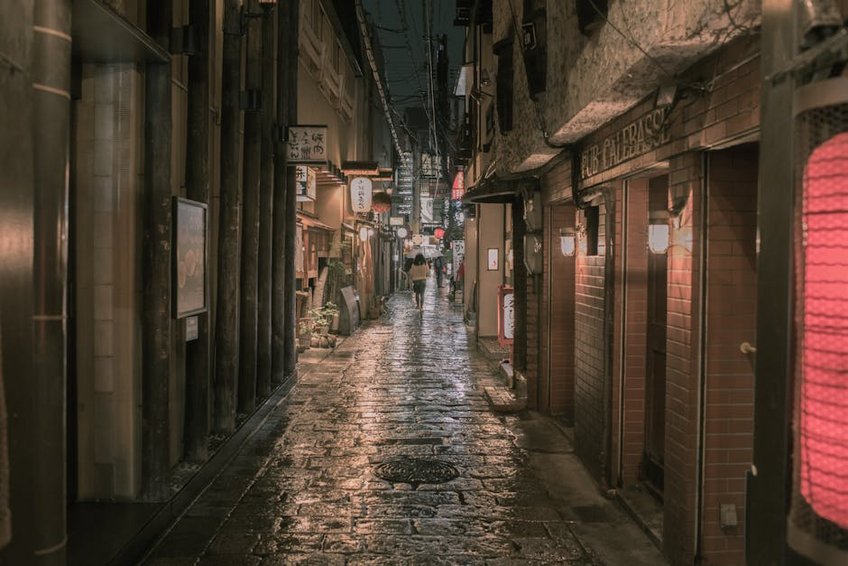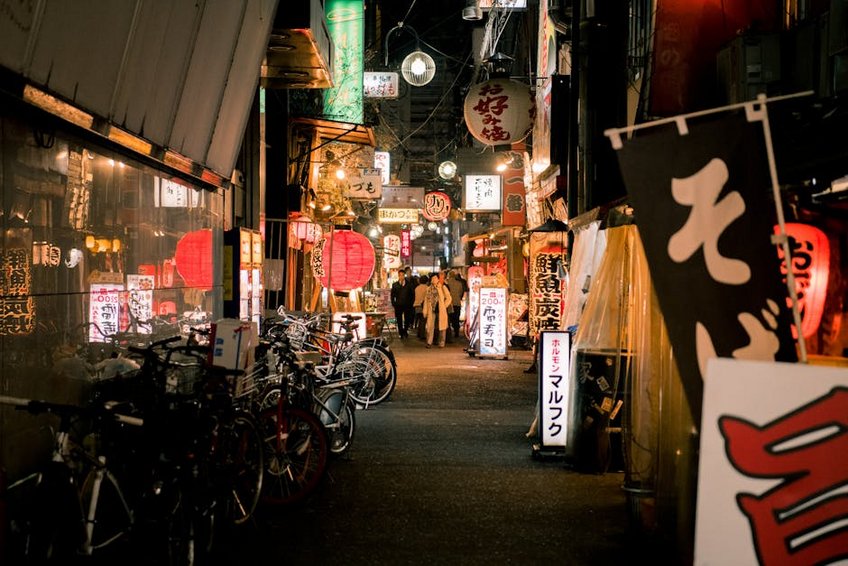Osaka Dotonbori: Your Ultimate Guide to Japan’s Neon Paradise
Osaka Dotonbori represents the vibrant, beating heart of Japan’s second-largest city, a dazzling entertainment district that perfectly captures Osaka’s energetic spirit. As you step into this neon-lit wonderland, you’ll immediately understand why it’s considered one of Japan’s most iconic destinations. The area stretches along the Dotonbori Canal, where massive, elaborate signs and billboards compete for your attention while the enticing aromas of street food fill the air. Whether you’re a food lover seeking authentic Japanese cuisine, a shopper hunting for unique souvenirs, or simply someone who wants to experience urban Japan at its most dynamic, Osaka Dotonbori delivers an unforgettable experience. The district comes alive particularly at night when the neon lights reflect beautifully on the canal waters, creating that postcard-perfect scene you’ve probably seen in travel magazines. From the famous Glico Running Man sign to the enormous moving crab restaurant signs, every corner offers something photogenic and memorable. You’ll find yourself constantly reaching for your camera while navigating through the cheerful crowds that give this area its infectious energy.
Osaka Dotonbori Essential Information – What Every Visitor Should Know
Before diving into the sensory overload that is Osaka Dotonbori, it’s helpful to understand the district’s background and practical details. Dotonbori dates back to the early 17th century when businessman Yasui Doton began developing the area, though it wasn’t completed until after his death during the Siege of Osaka. The name literally means “Doton’s canal,” honoring its founder. Today, this 580-meter stretch along the canal has become Osaka’s premier entertainment and dining destination, attracting both locals and international visitors. The area is easily accessible from various parts of the city, with multiple subway stations within walking distance. You’ll want to wear comfortable shoes as you’ll be doing plenty of walking and standing in lines for popular food stalls. While the district is generally safe, be mindful of your belongings in crowded areas and watch your step along the sometimes-crowded canal pathways. The best approach is to arrive hungry and curious, ready to explore both the main thoroughfares and the smaller side streets that hide some of the area’s best secrets.
Historical Significance and Cultural Context
- Dotonbori was originally developed in 1612 as a theater and entertainment district during the Edo period, making it over 400 years old
- The area was heavily damaged during World War II but was rebuilt and reinvented as a modern entertainment hub during Japan’s economic boom
- Many of the iconic mechanical signs that define the area’s visual identity were installed during the 1950s and 1960s as businesses competed for attention
- Budget travelers can enjoy Dotonbori for $25-40 per person by focusing on street food like takoyaki ($3-5), kushikatsu ($1-2 per skewer), and standing noodle bars ($5-8), with free entertainment from people-watching and admiring the neon displays
- Mid-range visitors should budget $50-80 per person for a proper restaurant meal at mid-level establishments like conveyor belt sushi ($15-25), ramen shops ($10-15), or okonomiyaki restaurants ($15-20), plus drinks and dessert from street vendors
- Luxury experiences range from $100-200+ per person for premium crab meals at Kani Doraku, multi-course kaiseki meals, or reservations at high-end bars with views of the canal, plus shopping at designer boutiques in the surrounding areas
- Osaka Official Guide
- Japan Guide Dotonbori Information
Key District Layout and Navigation Tips
Understanding Dotonbori’s layout will significantly enhance your experience. The main action happens along the 580-meter canal stretch between Dotonboribashi Bridge and Nipponbashi Bridge. The most famous landmarks, including the Glico Running Man sign and the giant crab sign of Kani Doraku, are concentrated in this central section. Parallel to the canal runs the covered shopping arcade Shinsaibashi-suji, which offers a different but equally fascinating experience with its countless shops and restaurants. The side streets, particularly those leading away from the canal, often contain hidden gems with shorter lines and more local crowds. For optimal navigation, consider starting at Namba Station and working your way toward the canal, then following the waterway to take in all the major sights. The area is pedestrian-friendly, though evenings can get extremely crowded, so patience is essential.

Osaka Dotonbori Planning Your Trip – Timing, Budget, and Preparation
Proper planning can transform your Osaka Dotonbori experience from overwhelming to extraordinary. The district operates on a different rhythm than most tourist areas, with many restaurants and shops staying open late into the night. For first-time visitors, I recommend allocating at least one full evening to explore Dotonbori properly, though food enthusiasts might want to schedule multiple visits to sample everything. The area is accessible year-round, but each season offers a distinct atmosphere and different seasonal foods to try. Your budget will depend largely on your dining choices, as food represents the primary expense in this culinary paradise. Comfortable walking shoes are non-negotiable, and bringing cash is essential as many smaller vendors and restaurants don’t accept credit cards. Consider downloading a translation app or learning a few basic Japanese phrases, as English proficiency varies significantly among shopkeepers and restaurant staff.
Best Time to Visit Osaka Dotonbori
The magic of Osaka Dotonbori changes with the seasons, each offering unique advantages. Spring (March-May) brings pleasant temperatures and beautiful cherry blossoms in nearby parks, making it ideal for combining canal-side exploration with hanami (cherry blossom viewing) parties. Summer (June-August) can be hot and humid but features vibrant festivals and extended evening hours when the neon lights create a spectacular contrast against the dark sky. Autumn (September-November) offers comfortable weather and beautiful fall foliage, while winter (December-February) provides a completely different experience with holiday illuminations and warm comfort foods. For avoiding crowds, weekdays are significantly less busy than weekends, and arriving before 5 PM gives you time to explore before the evening rush. The district is particularly magical during Japan’s “golden week” in late April/early May and during the autumn leaves season, though these are also the most crowded periods.
Budget Planning and Costs for Osaka Dotonbori
Essential Preparation Checklist
Preparing properly for your Osaka Dotonbori adventure ensures you can focus on the experience rather than logistical challenges. First, ensure you have comfortable walking shoes as you’ll be on your feet for hours navigating crowded streets and standing in food lines. Bring sufficient cash, as many smaller vendors and restaurants operate on a cash-only basis, though larger establishments increasingly accept credit cards. Download offline maps or screenshot directions, as cellular service can be spotty in crowded areas. Consider bringing wet wipes or hand sanitizer since you’ll be eating street food with your hands. If you’re sensitive to crowds, visiting during off-peak hours (weekday afternoons) can provide a more relaxed experience. Finally, prepare your camera or smartphone for plenty of photography opportunities, from the iconic Glico Man sign to the elaborate food displays that make Dotonbori so visually captivating.
Osaka Dotonbori Top Attractions and Activities – Must-See Sights and Experiences
Osaka Dotonbori offers an incredible concentration of attractions within a relatively compact area, ensuring that every moment of your visit feels engaging and exciting. The district’s visual spectacle begins with its famous mechanical signs, including the gigantic crab outside Kani Doraku restaurant, the moving clown face at Don Quijote discount store, and the iconic Glico Running Man sign that has become synonymous with Osaka itself. Beyond the visual landmarks, the area is a food lover’s paradise where you can sample Osaka’s famous culinary creations including takoyaki (octopus balls), okonomiyaki (savory pancakes), and kushikatsu (deep-fried skewers). Cultural experiences abound as well, from traditional theaters to modern gaming arcades that showcase Japan’s unique entertainment culture. The combination of historical elements, cutting-edge technology, and incredible food creates an environment that feels both timeless and contemporary, offering something fascinating around every corner.
Must-See Highlights and Iconic Landmarks
No visit to Osaka Dotonbori is complete without experiencing its most famous landmarks, starting with the Glico Running Man sign on the Ebisu Bridge. This iconic neon advertisement has been a symbol of the area since 1935 and serves as the perfect backdrop for photos that scream “I visited Osaka!” Just a short walk away, you’ll encounter the gigantic mechanical crab sign outside Kani Doraku, which has been attracting customers since 1960 with its moving claws and eyes. The Don Quijote discount store features a massive ferris wheel and moving clown face that create an unforgettable visual spectacle, especially when illuminated at night. For a different perspective, consider taking a canal cruise that offers views of the neon signs from the water, providing a refreshing break from the crowded streets. These landmarks represent just the beginning of what makes Dotonbori special, but they form the essential foundation of any visit to this extraordinary district.
Hidden Gems and Local Favorites
While the main strip of Osaka Dotonbori offers plenty to see and do, some of the most memorable experiences await in the smaller side streets and less obvious locations. Hozen-ji Yokocho is a narrow stone-paved alley that feels like stepping back in time, complete with a tranquil temple where visitors sprinkle water on moss-covered statues for good luck. The area behind the main strip contains numerous small bars and restaurants favored by locals, often with more authentic atmospheres and reasonable prices compared to the tourist-heavy main drag. For a unique cultural experience, visit the Namba Grand Kagetsu theater to witness manzai (traditional Japanese comedy) performances that showcase Osaka’s famous humor. Early morning visits reveal a completely different side of Dotonbori, when cleaning crews wash the streets and delivery trucks restock restaurants, offering a glimpse behind the scenes of this 24-hour entertainment district that few tourists ever witness.
Osaka Dotonbori Practical Travel Information – Transportation, Accommodation, and Navigation
Navigating Osaka Dotonbori and its surrounding areas requires some practical knowledge to maximize your experience while minimizing stress. The district is incredibly well-connected to Osaka’s extensive public transportation network, with multiple subway and train stations within easy walking distance. Namba Station serves as the main hub, connecting to the Midosuji subway line, Kintetsu Railway, and Nankai Railway, making it accessible from anywhere in the Kansai region. Accommodation options range from luxury hotels with stunning city views to budget-friendly business hotels and traditional ryokans, though booking well in advance is essential during peak seasons. While the area is generally safe, be mindful of your belongings in crowded conditions and watch for bicycles and vehicles in shared spaces. English signage is relatively common, but having a translation app available can help with menus and directions. The compact nature of the district means you can explore most of it on foot, though comfortable shoes are absolutely essential for enjoying the experience fully.
| Accommodation Type | Features and Location | Price Range (USD per night) |
|---|---|---|
| Luxury Hotels | River views, premium amenities, walking distance to Dotonbori | $250-500 |
| Business Hotels | Compact but efficient rooms, excellent location, basic amenities | $80-150 |
| Budget Hostels | Shared facilities, social atmosphere, short subway ride to Dotonbori | $25-50 |
| Traditional Ryokans | Cultural experience, tatami rooms, onsen baths, slightly further location | $150-300 |


